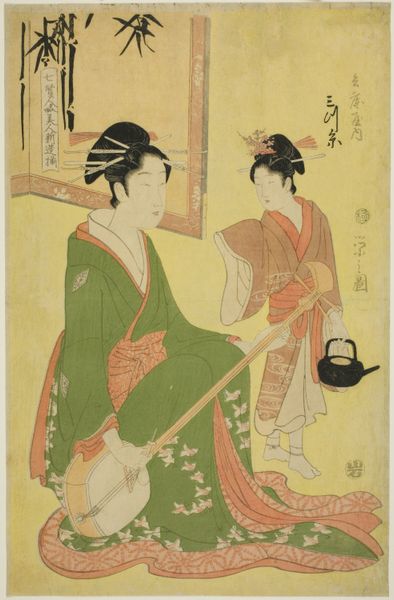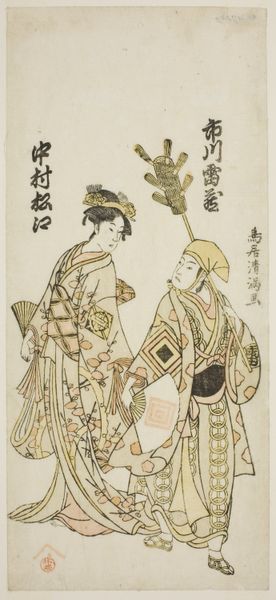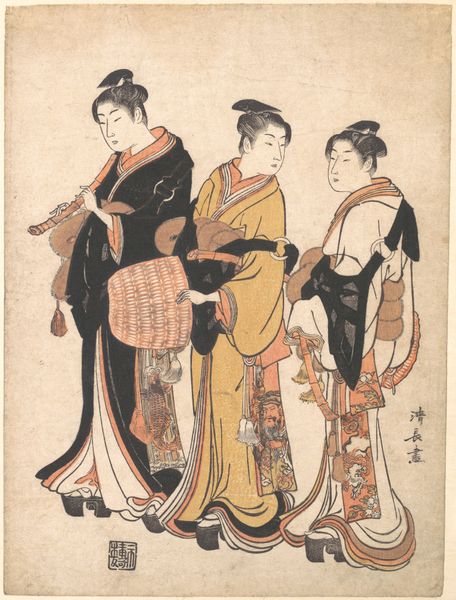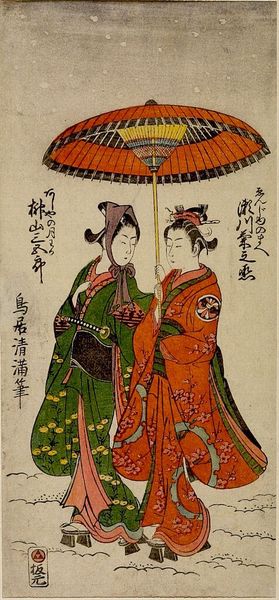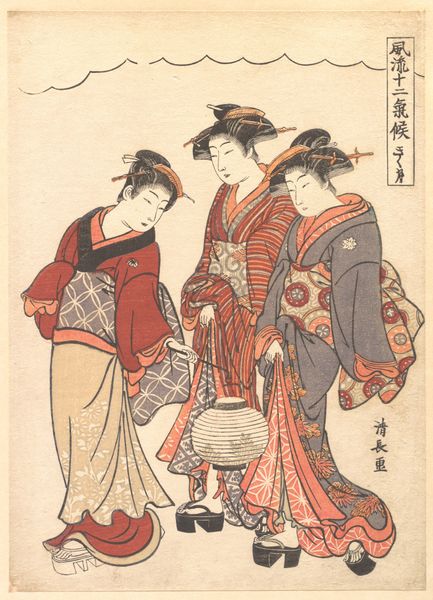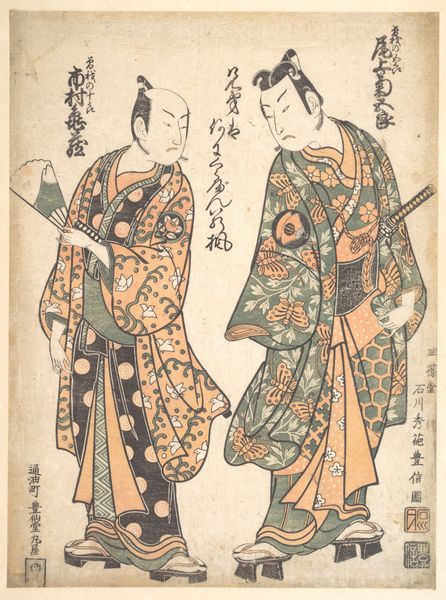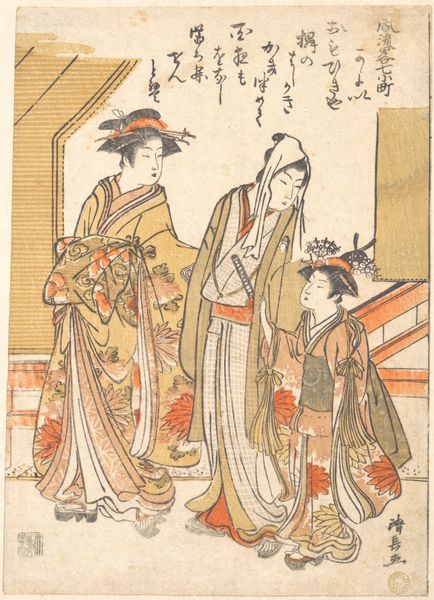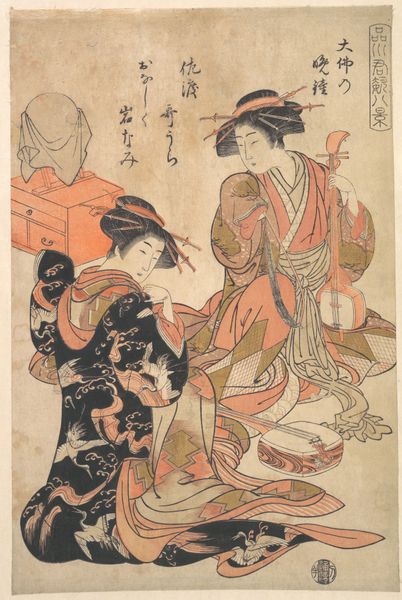
HanaÅgi of the Ågiya with kamuro Yoshino and Tatsuta, from the series Contest of Designs in the Pleasure Quarters (SeirÅ moyÅ awase) late 18th century-early 19th century"
0:00
0:00
Dimensions: Paper: H. 37.8 cm x W. 25.5 cm (14 7/8 x 10 1/16 in.)
Copyright: CC0 1.0
Editor: This is a woodblock print titled "HanaÅgi of the Ågiya with kamuro Yoshino and Tatsuta" by ChÅbunsai Eishi from the late Edo period. I'm really drawn to the details in their clothing, the patterns and colors must have been so labor-intensive. What can you tell me about the materials and production of this print? Curator: The key is understanding that ukiyo-e prints like this weren't just aesthetic objects, but products of a complex system. The paper itself, the specific woods used for the blocks, the pigments sourced and mixed, and the collaboration between artist, block carver, and printer all speak to a sophisticated consumer culture. How does recognizing this change your understanding? Editor: It makes me think about the intended audience, not just as art appreciators, but also as consumers participating in a system of labor and material exchange. I hadn't thought about it that way before. Curator: Precisely. By examining these production processes, we can move beyond simply admiring the image and begin to unpack the economic and social forces at play in its creation and distribution.
Comments
No comments
Be the first to comment and join the conversation on the ultimate creative platform.


